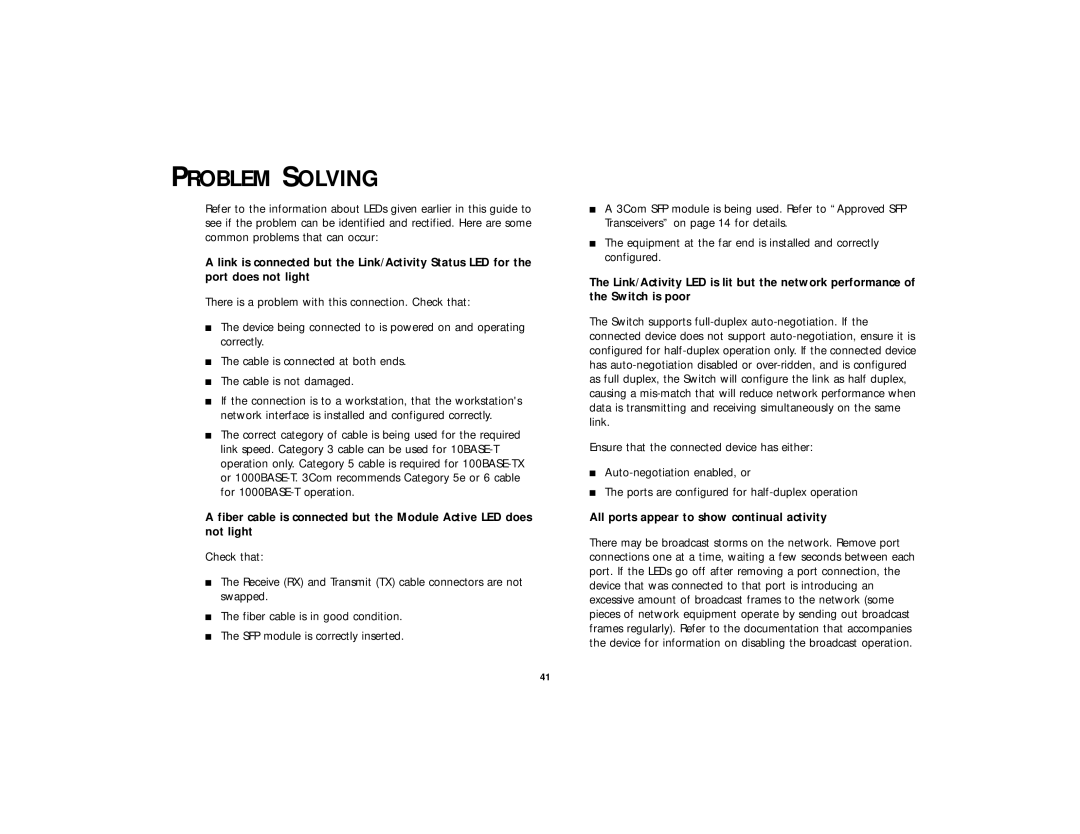PROBLEM SOLVING
Refer to the information about LEDs given earlier in this guide to see if the problem can be identified and rectified. Here are some common problems that can occur:
A link is connected but the Link/Activity Status LED for the port does not light
There is a problem with this connection. Check that:
■The device being connected to is powered on and operating correctly.
■The cable is connected at both ends.
■The cable is not damaged.
■If the connection is to a workstation, that the workstation's network interface is installed and configured correctly.
■The correct category of cable is being used for the required link speed. Category 3 cable can be used for
A fiber cable is connected but the Module Active LED does not light
Check that:
■The Receive (RX) and Transmit (TX) cable connectors are not swapped.
■The fiber cable is in good condition.
■The SFP module is correctly inserted.
■A 3Com SFP module is being used. Refer to “Approved SFP Transceivers” on page 14 for details.
■The equipment at the far end is installed and correctly configured.
The Link/Activity LED is lit but the network performance of the Switch is poor
The Switch supports
Ensure that the connected device has either:
■
■The ports are configured for
All ports appear to show continual activity
There may be broadcast storms on the network. Remove port connections one at a time, waiting a few seconds between each port. If the LEDs go off after removing a port connection, the device that was connected to that port is introducing an excessive amount of broadcast frames to the network (some pieces of network equipment operate by sending out broadcast frames regularly). Refer to the documentation that accompanies the device for information on disabling the broadcast operation.
41
